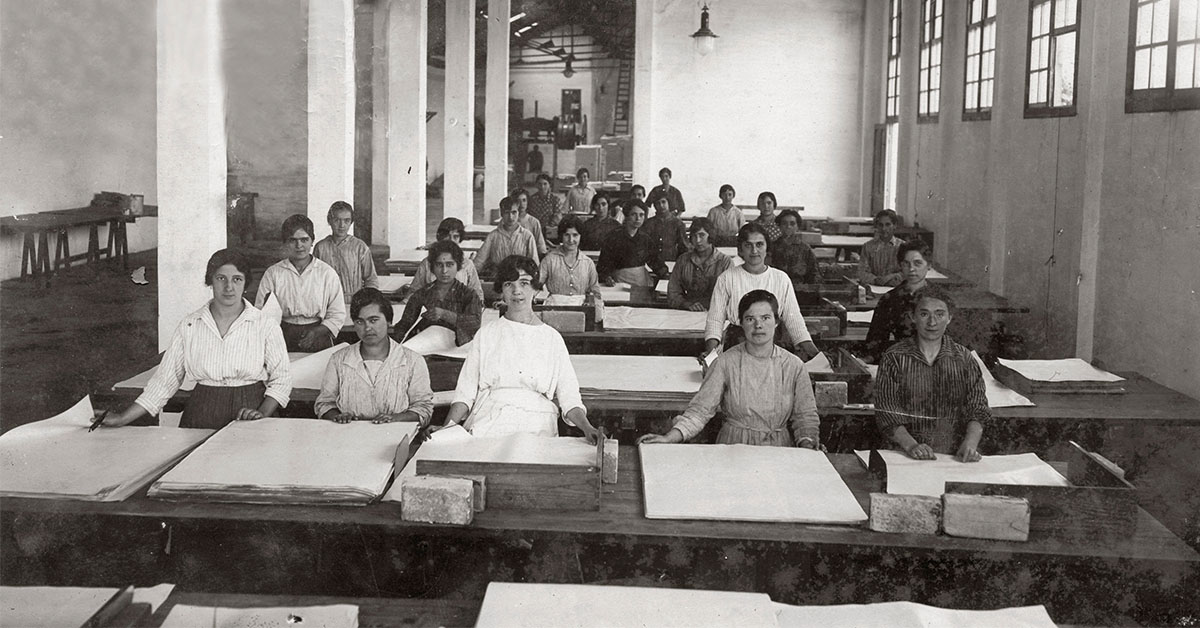Basque ethnography at a glance
Industry has a long history in the Basque Country and during those years, it has gone through many ups and downs. Each region has its own history and stories, but in this article focuses on the paper industry, which was particularly important in the region of Tolosaldea (Gipuzkoa). The paper industry began with the opening of Nuestra Señora de la Esperanza in Tolosa in 1842, followed by many other factories in the region, especially in the Oria basin.
The construction and maintenance of the paper mills required a lot of manpower since most of the work was not mechanised. Locals began to work in the paper mills, which had a direct impact on the life in small villages that had previous been devoted to agriculture. This new situation had a direct impact on the small villages, which had previously been dominated by village life. Although this affected the whole population, this article focuses on the young girls of the time. This is because many girls worked in the paper mills from the time they left school at the age of 14 until they married.
It should be noted that, although in this case I interviewed women who worked in the paper industry in Berrobi (Tolosaldea, Gipuzkoa), similar situations could be found in other paper mills or other industries in the region[1].
Focusing on the subject, in the 1950s-60s, during the Francoist dictatorship, the regime considered that women’s main responsibility was to take care of the family and the home, so there were very few women who continued with their studies after leaving school at the age of 14. The options available to a young girl at that age were to work in the family farm or to become a maid. In these circumstances, working in the paper mill was the most profitable solution.
“They offered us better conditions in the factory, we had Sunday off and they paid overtime, so what could be better? Besides, we started working the day after we asked for the job”.
Most of the women’s work consisted of passing the paper through, cleaning it, putting it in fans and counting it – in other words, what was done by hand at the time but is now done by machine. They used to work in one room, while the men had another area in the workshop because the jobs were clearly defined and separated. On days when there was not much work, they were told to clean the men’s toilets, “I didn’t like that job at all, we had the impression that they made it dirty on purpose”, says one of the women interviewed.
Although this job did not give them economic independence, it was very gratifying for these women to receive money week after week. Some had to hand over the money at home, but others kept it for small whims or for their dowry. In terms of wages, the interviewees stressed that women earned less than men. As a result of the years social security contributions they paid while working in the factory, most of them have a pension now that they are retired.
School, factory work and then marriage. That is what used to be done. That is why almost all of them stopped working when they got married. They emphasise that this was the way things were for them and most of them agree with the decision they made.
“At that time, it was normal to leave work, everyone did it, one salary was enough at home and we women raised our children gently at home. It was a very normal decision, today things are very different, I would not stop working today”.
In the decades that followed, women also worked in paper mills, but more and more of them continued to work after marriage.
Maddi Dorronsoro – Anthropologist
[1] An example of this is the case of the teenage girls or single women who worked in the porcelain factory of Bidania. For more information, see “Bidaniako Ontzi Fabrika” (2021).


